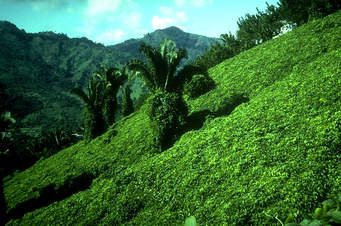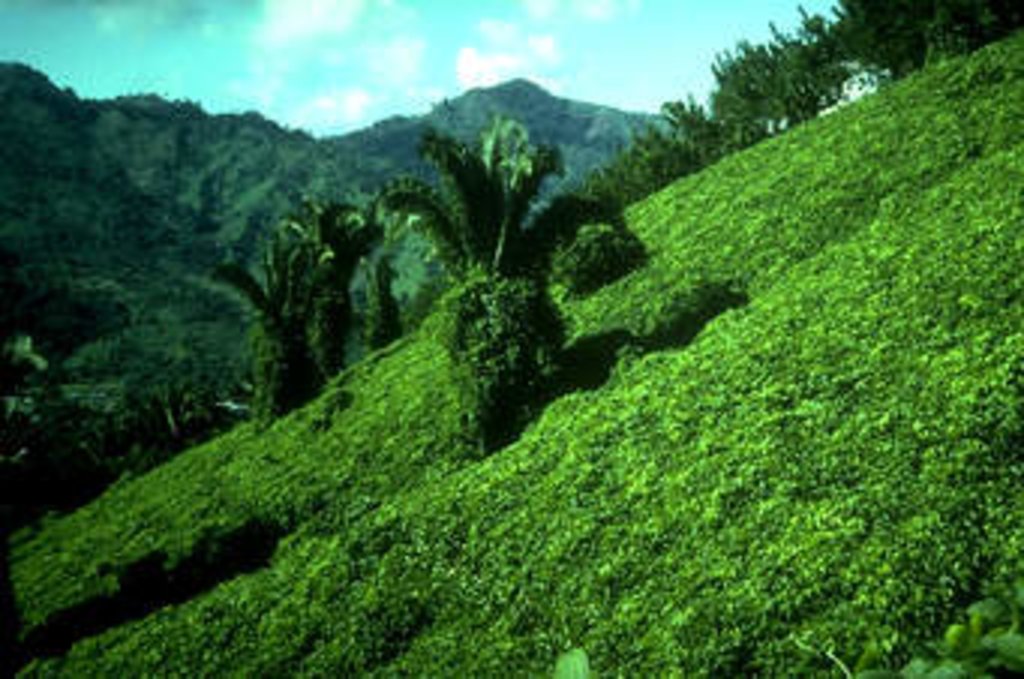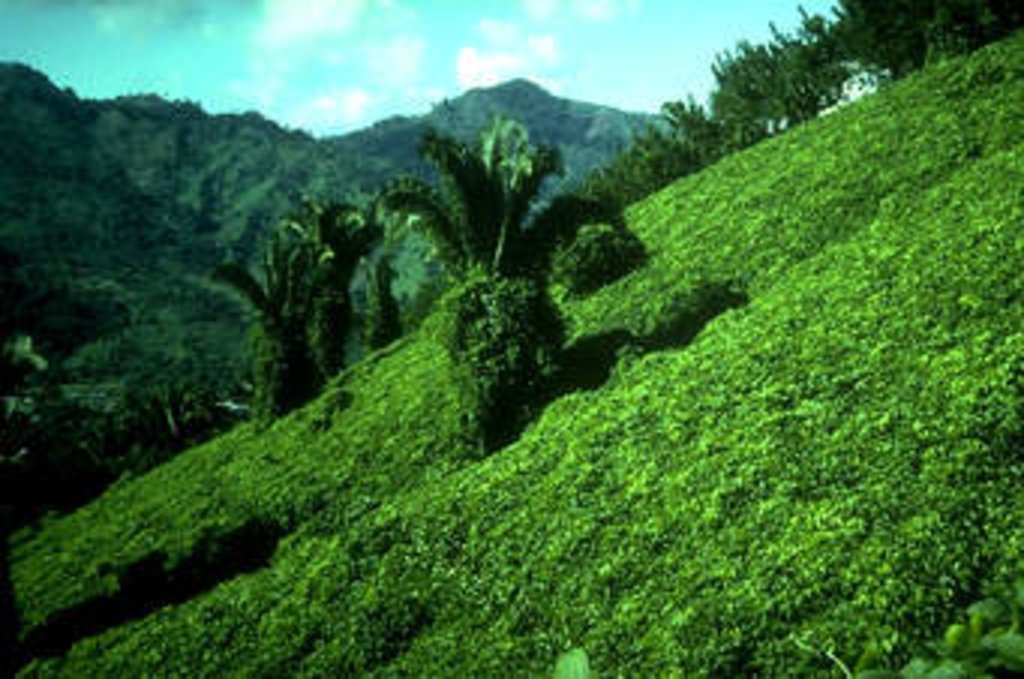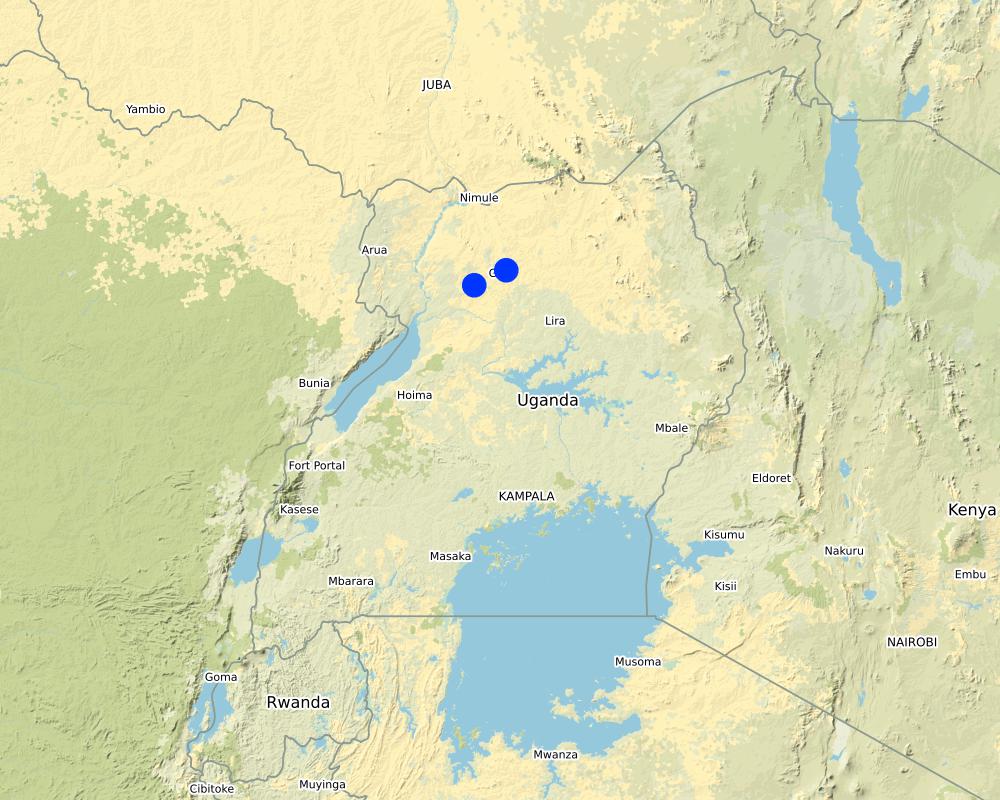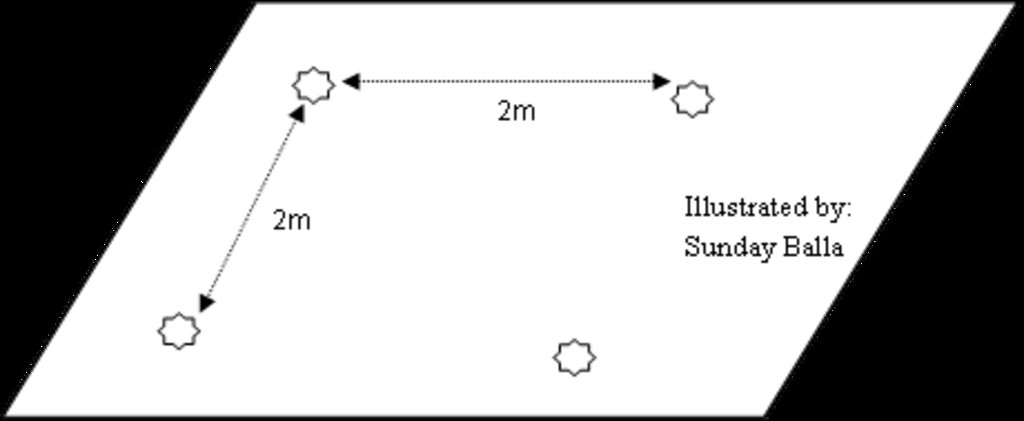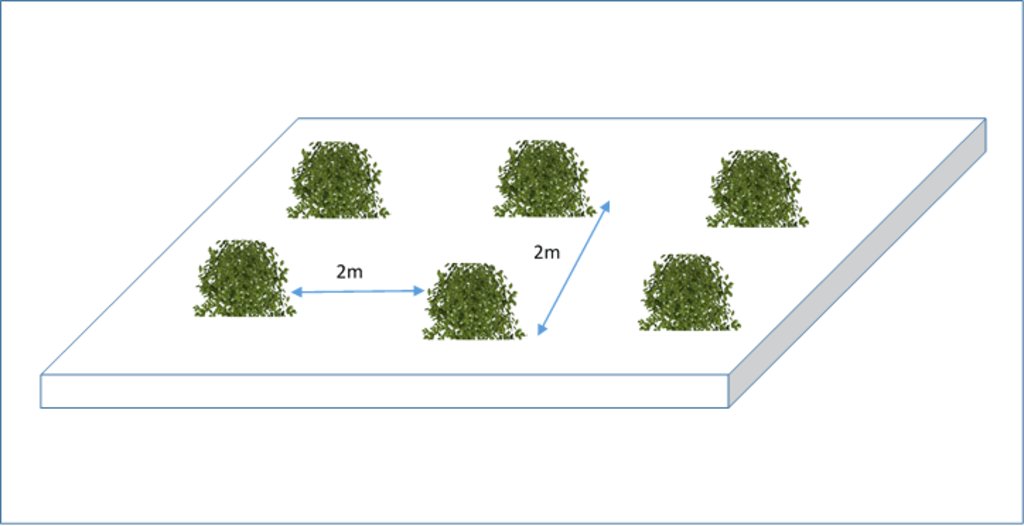Growing cover crops for weed control [Uganda]
- Creation:
- Update:
- Compiler: Sunday Balla Amale
- Editors: Joy Tukahirwa, Kamugisha Rick Nelson, betty adoch, Bernard Fungo
- Reviewers: John Stephen Tenywa, Nicole Harari, Udo Höggel
Pito cam me neko doo
technologies_3306 - Uganda
View sections
Expand all Collapse all1. General information
1.2 Contact details of resource persons and institutions involved in the assessment and documentation of the Technology
Key resource person(s)
SLM specialist:
Sabiti Kidega Faith
Gulu Uganda Country Diary Farm
P.O box 388, Gulu Uganda
Uganda
Name of project which facilitated the documentation/ evaluation of the Technology (if relevant)
Scaling-up SLM practices by smallholder farmers (IFAD)Name of the institution(s) which facilitated the documentation/ evaluation of the Technology (if relevant)
Makerere University (Makerere University) - Uganda1.3 Conditions regarding the use of data documented through WOCAT
When were the data compiled (in the field)?
04/12/2017
The compiler and key resource person(s) accept the conditions regarding the use of data documented through WOCAT:
Ja
1.4 Declaration on sustainability of the described Technology
Is the Technology described here problematic with regard to land degradation, so that it cannot be declared a sustainable land management technology?
Nee
1.5 Reference to Questionnaire(s) on SLM Approaches
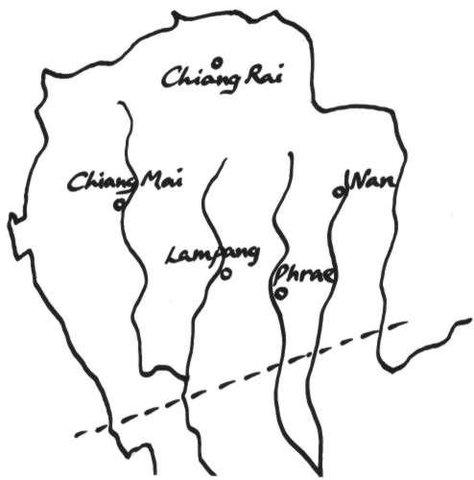
Vegetative erosion control and conservation cropping system [Thailand]
This approach is 'the way' or 'how' the 'vegetative erosion control and conservation cropping system' has been implemented in the Upper North region of Thailand.
- Compiler: Samran Sombatpanit
2. Description of the SLM Technology
2.1 Short description of the Technology
Definition of the Technology:
Cultivating leguminous crops in weed prone fields to help overgrow and kill the weeds
2.2 Detailed description of the Technology
Description:
Weeds account for a substantial proportion of crop yield losses among farming communities in northern Uganda. Weeds reduce farm and forest productivity, by depriving them of soil nutrients and water, the latter especially during dry seasons.
Majority of farmers in northern Uganda weed fields using rudimentary methods such as hand-hoeing and hand picking; both of which are manual and ineffective. Mechanized and herbicide weeding methods are out of reach of typical small scale farmers in the region. Moreover, alternative, more cost effective and environmentally augmenting natural weed control methods such as cover crops or living mulch exist, but are yet to be adopted widely in the region. Cover crops are creeping leguminous crops such as Macuna beans (mucuna pruriens) and local wild beans, which are planted in fields purposely to suppress weeds, control runoff and soil erosion, conserve soil moisture, fix nitrogen, regulate soil temperature, improve soil structure and provide fodder for livestock.
In northern Uganda, cover crops are usually planted at a spacing of 2 meter by 2 meter (see figure below) and in holes of 5 cm depth. Cover mulches are generally planted after the main crops have been harvested to minimize cover crop-main crop competition for resources. Nevertheless, planting while the main crop is growing in the field is also possible. However, the main crops should be given up to five weeks to establish before planting your cover crop.
The cover crop technology, being a natural phenomenon is usually affordable by typical small scale farmers in northern Uganda. The only challenge is to access to quality seed of suitable cover crops. Otherwise, after sowing the first and purchased seed, the farmer uses own seed harvested from previous crops for subsequent season sowing. However, the farmer needs to ensure that cover crops do not become invasive in cropping fields. This is done by clearing cover crops just before their fruits mature. As such, only a portion of the cover crop to be left for seed purpose is allowed growth to full maturity.
2.3 Photos of the Technology
2.5 Country/ region/ locations where the Technology has been applied and which are covered by this assessment
Country:
Uganda
Region/ State/ Province:
Gulu
Further specification of location:
Nwoya District
Comments:
The other location is mapped for available seed of a good cover crop (in Gulu)
Map
×2.6 Date of implementation
Indicate year of implementation:
2013
2.7 Introduction of the Technology
Specify how the Technology was introduced:
- through projects/ external interventions
3. Classification of the SLM Technology
3.1 Main purpose(s) of the Technology
- improve production
- reduce, prevent, restore land degradation
- create beneficial economic impact
3.2 Current land use type(s) where the Technology is applied

Cropland
- Annual cropping
- Perennial (non-woody) cropping
- Tree and shrub cropping
Main crops (cash and food crops):
Maize, cassava, bananas, oranges, mangoes, tree plantations

Grazing land
Extensive grazing land:
- Semi-nomadism/ pastoralism
Intensive grazing/ fodder production:
- Cut-and-carry/ zero grazing
- Improved pastures
3.3 Further information about land use
Water supply for the land on which the Technology is applied:
- rainfed
Number of growing seasons per year:
- 2
Specify:
Two rainy seasons
3.4 SLM group to which the Technology belongs
- rotational systems (crop rotation, fallows, shifting cultivation)
- improved ground/ vegetation cover
- integrated pest and disease management (incl. organic agriculture)
3.5 Spread of the Technology
Specify the spread of the Technology:
- applied at specific points/ concentrated on a small area
Comments:
gardens ranging from 0.25 to 5ha
3.6 SLM measures comprising the Technology

agronomic measures
- A1: Vegetation/ soil cover
- A2: Organic matter/ soil fertility

vegetative measures
- V2: Grasses and perennial herbaceous plants
3.7 Main types of land degradation addressed by the Technology

soil erosion by water
- Wt: loss of topsoil/ surface erosion

soil erosion by wind
- Et: loss of topsoil

chemical soil deterioration
- Cp: soil pollution

biological degradation
- Bp: increase of pests/ diseases, loss of predators
3.8 Prevention, reduction, or restoration of land degradation
Specify the goal of the Technology with regard to land degradation:
- reduce land degradation
- restore/ rehabilitate severely degraded land
4. Technical specifications, implementation activities, inputs, and costs
4.1 Technical drawing of the Technology
4.2 Technical specifications/ explanations of technical drawing
Spacing between covercrop plants: 2m X 2m, plant one seed per planting hole.
4.3 General information regarding the calculation of inputs and costs
Specify how costs and inputs were calculated:
- per Technology area
Indicate size and area unit:
1ha
other/ national currency (specify):
uganda shillings
Indicate exchange rate from USD to local currency (if relevant): 1 USD =:
3600.0
Indicate average wage cost of hired labour per day:
5000
4.4 Establishment activities
| Activity | Type of measure | Timing | |
|---|---|---|---|
| 1. | Obtaining seed | Management | dry season |
| 2. | Digging the holes for planting | Agronomic | onset of rains |
| 3. | Planting covercrop seeds | Agronomic | onset of rains |
| 4. | Clearing cover crops (partly) | Management | at fruit set |
| 5. | Harvesting covercrop seed | Management | at seed maturity |
Comments:
Most of the field is cleared, only a portion about 10m x 10m is left to grow to provide seed for saving
4.5 Costs and inputs needed for establishment
| Specify input | Unit | Quantity | Costs per Unit | Total costs per input | % of costs borne by land users | |
|---|---|---|---|---|---|---|
| Labour | During planting | personnel | 2.0 | 5000.0 | 10000.0 | 100.0 |
| Labour | Clearing | personnel | 6.0 | 5000.0 | 30000.0 | 100.0 |
| Labour | Harvesting | personnel | 1.0 | 5000.0 | 5000.0 | 100.0 |
| Equipment | Hand hoe | pieces | 1.0 | 12000.0 | 12000.0 | 100.0 |
| Equipment | Slashers | pieces | 1.0 | 6000.0 | 6000.0 | 100.0 |
| Plant material | Seeds | kg | 2.0 | 8000.0 | 16000.0 | 100.0 |
| Total costs for establishment of the Technology | 79000.0 | |||||
4.6 Maintenance/ recurrent activities
| Activity | Type of measure | Timing/ frequency | |
|---|---|---|---|
| 1. | Planting | Agronomic | once after every 3-4 years |
| 2. | Clearing | Management | once after every 3-4 years |
| 3. | Seed harvesting and saving | Management | once after every 3-4 years |
4.7 Costs and inputs needed for maintenance/ recurrent activities (per year)
| Specify input | Unit | Quantity | Costs per Unit | Total costs per input | % of costs borne by land users | |
|---|---|---|---|---|---|---|
| Labour | Planting | personnel | 0.5 | 5000.0 | 2500.0 | 100.0 |
| Labour | Slashing | personnel | 1.5 | 5000.0 | 7500.0 | 100.0 |
| Equipment | Handhoe | pieces | 0.25 | 12000.0 | 3000.0 | 100.0 |
| Equipment | Slashers | pieces | 0.25 | 6000.0 | 1500.0 | 100.0 |
| Total costs for maintenance of the Technology | 14500.0 | |||||
Comments:
The cost is given as an estimate since it would be incurred once every 3-4 years. So, values of quantity per year is 0.25 of 4 years.
4.8 Most important factors affecting the costs
Describe the most determinate factors affecting the costs:
Labour for slashing the covercrop
5. Natural and human environment
5.1 Climate
Annual rainfall
- < 250 mm
- 251-500 mm
- 501-750 mm
- 751-1,000 mm
- 1,001-1,500 mm
- 1,501-2,000 mm
- 2,001-3,000 mm
- 3,001-4,000 mm
- > 4,000 mm
Agro-climatic zone
- sub-humid
5.2 Topography
Slopes on average:
- flat (0-2%)
- gentle (3-5%)
- moderate (6-10%)
- rolling (11-15%)
- hilly (16-30%)
- steep (31-60%)
- very steep (>60%)
Landforms:
- plateau/plains
- ridges
- mountain slopes
- hill slopes
- footslopes
- valley floors
Altitudinal zone:
- 0-100 m a.s.l.
- 101-500 m a.s.l.
- 501-1,000 m a.s.l.
- 1,001-1,500 m a.s.l.
- 1,501-2,000 m a.s.l.
- 2,001-2,500 m a.s.l.
- 2,501-3,000 m a.s.l.
- 3,001-4,000 m a.s.l.
- > 4,000 m a.s.l.
Indicate if the Technology is specifically applied in:
- not relevant
5.3 Soils
Soil depth on average:
- very shallow (0-20 cm)
- shallow (21-50 cm)
- moderately deep (51-80 cm)
- deep (81-120 cm)
- very deep (> 120 cm)
Soil texture (topsoil):
- medium (loamy, silty)
Soil texture (> 20 cm below surface):
- fine/ heavy (clay)
Topsoil organic matter:
- medium (1-3%)
5.4 Water availability and quality
Ground water table:
> 50 m
Availability of surface water:
medium
Water quality (untreated):
poor drinking water (treatment required)
Is water salinity a problem?
Nee
Is flooding of the area occurring?
Nee
5.5 Biodiversity
Species diversity:
- medium
Habitat diversity:
- medium
5.6 Characteristics of land users applying the Technology
Sedentary or nomadic:
- Sedentary
Market orientation of production system:
- subsistence (self-supply)
Off-farm income:
- > 50% of all income
Relative level of wealth:
- poor
Individuals or groups:
- individual/ household
Level of mechanization:
- manual work
Gender:
- women
- men
Age of land users:
- middle-aged
- elderly
5.7 Average area of land owned or leased by land users applying the Technology
- < 0.5 ha
- 0.5-1 ha
- 1-2 ha
- 2-5 ha
- 5-15 ha
- 15-50 ha
- 50-100 ha
- 100-500 ha
- 500-1,000 ha
- 1,000-10,000 ha
- > 10,000 ha
Is this considered small-, medium- or large-scale (referring to local context)?
- medium-scale
5.8 Land ownership, land use rights, and water use rights
Land ownership:
- individual, not titled
Land use rights:
- individual
Water use rights:
- communal (organized)
5.9 Access to services and infrastructure
health:
- poor
- moderate
- good
education:
- poor
- moderate
- good
technical assistance:
- poor
- moderate
- good
employment (e.g. off-farm):
- poor
- moderate
- good
markets:
- poor
- moderate
- good
energy:
- poor
- moderate
- good
roads and transport:
- poor
- moderate
- good
drinking water and sanitation:
- poor
- moderate
- good
financial services:
- poor
- moderate
- good
6. Impacts and concluding statements
6.1 On-site impacts the Technology has shown
Socio-economic impacts
Production
crop production
Quantity before SLM:
1200kg per ha
Quantity after SLM:
1800kg per ha
Comments/ specify:
Yields pertain to maize
crop quality
Quantity before SLM:
poor seed
Quantity after SLM:
good quality seed
fodder production
Comments/ specify:
Slashed cover crop as feeds
fodder quality
animal production
risk of production failure
production area
Income and costs
expenses on agricultural inputs
Quantity before SLM:
20000 per year
Quantity after SLM:
0
Comments/ specify:
Pertains to herbicides
farm income
workload
Comments/ specify:
Now weed garden once a season. Before farmers used to weed 2-3 times per season.
Socio-cultural impacts
food security/ self-sufficiency
SLM/ land degradation knowledge
Ecological impacts
Water cycle/ runoff
surface runoff
evaporation
6.2 Off-site impacts the Technology has shown
buffering/ filtering capacity
wind transported sediments
6.3 Exposure and sensitivity of the Technology to gradual climate change and climate-related extremes/ disasters (as perceived by land users)
Gradual climate change
Gradual climate change
| Season | Type of climatic change/ extreme | How does the Technology cope with it? | |
|---|---|---|---|
| annual temperature | increase | very well | |
| seasonal temperature | dry season | increase | well |
| annual rainfall | decrease | very well | |
| seasonal rainfall | wet/ rainy season | decrease | very well |
Climate-related extremes (disasters)
Meteorological disasters
| How does the Technology cope with it? | |
|---|---|
| local windstorm | well |
Climatological disasters
| How does the Technology cope with it? | |
|---|---|
| drought | well |
6.4 Cost-benefit analysis
How do the benefits compare with the establishment costs (from land users’ perspective)?
Short-term returns:
positive
Long-term returns:
very positive
How do the benefits compare with the maintenance/ recurrent costs (from land users' perspective)?
Short-term returns:
positive
Long-term returns:
very positive
6.5 Adoption of the Technology
- 1-10%
Of all those who have adopted the Technology, how many have did so spontaneously, i.e. without receiving any material incentives/ payments?
- 90-100%
6.6 Adaptation
Has the Technology been modified recently to adapt to changing conditions?
Nee
6.7 Strengths/ advantages/ opportunities of the Technology
| Strengths/ advantages/ opportunities in the land user’s view |
|---|
| reduction of workload on the farmer during weeding |
| Reduction of erosion and improvement of soil fertility as the cover crop in most cases is a legume |
| Strengths/ advantages/ opportunities in the compiler’s or other key resource person’s view |
|---|
| Sustainable source of green manure, animal manure |
| Farmers can save own seed |
6.8 Weaknesses/ disadvantages/ risks of the Technology and ways of overcoming them
| Weaknesses/ disadvantages/ risks in the land user’s view | How can they be overcome? |
|---|---|
| Requires to be planted very early at onset of season | |
| Can become invasive if not well managed |
7. References and links
7.1 Methods/ sources of information
- field visits, field surveys
1
- interviews with land users
1
- interviews with SLM specialists/ experts
1
Links and modules
Expand all Collapse allLinks

Vegetative erosion control and conservation cropping system [Thailand]
This approach is 'the way' or 'how' the 'vegetative erosion control and conservation cropping system' has been implemented in the Upper North region of Thailand.
- Compiler: Samran Sombatpanit
Modules
No modules


